The Battle Against Mold: Keeping Your Wine Cellar Pristine and Your Vintages Exquisite
Step into a wine cellar, and you're enveloped in a world of sensory delight; the cool air, the scent of aged wood and, of course, the heady aroma of fine wines. These are spaces of darkened ambiance, places of tranquil respite where prized vintages age gracefully. However, wine cellars, the very conditions that make them perfect for preserving your favorite Cabernet or Merlot, can also create the perfect breeding ground for an unwelcome guest: mold.
Mold in wine cellars is a widespread issue due to the very nature of these spaces. Cellars, being dark and typically humid, provide just the right environment for molds to thrive. As a wine connoisseur, the last thing you want is mold compromising your precious collection or damaging the structural integrity of your cellar.
But fear not! Understanding the causes of mold in wine cellars and implementing preventative measures can help ensure your cellar remains a sanctuary for your wines, rather than a harbor for mold spores. Join us as we explore the causes, impacts, and solutions to mold in your wine cellar, helping you maintain the perfect balance of conditions to let your wines age to perfection while keeping mold at bay.
Mold: An Unwanted Consequence of Ideal Wine Storage Conditions
Mold spores are everywhere. They float through the air, invisible to the naked eye, and settle wherever conditions are right for their growth. For mold, the ideal conditions mirror those of a wine cellar - dark and humid. It's this unfortunate commonality that creates the persistent problem of mold in wine cellars.
The darkness is unavoidable, as it protects the wine from harmful UV light, which can degrade and prematurely age the wine. Humidity, however, is more of a balancing act. A wine cellar requires a certain level of humidity (typically around 70%) to prevent the corks from drying out, which would allow air into the bottles and ruin the wine. However, that same humidity can also provide a favorable environment for mold growth.
Excessive mold can lead to unpleasant smells and can potentially damage wine labels and other cellar materials. In extreme cases, it can also pose health risks. It's this balancing act between maintaining the ideal conditions for your wine and mitigating the risks of mold growth that makes managing a wine cellar such an art form. In the next sections, we'll look at how to achieve this delicate equilibrium, but first, let's understand the types of mold you might encounter in a wine cellar.
Types of Mold Commonly Found in Wine Cellars
Before you can effectively prevent or combat mold, you need to understand what you're dealing with. The types of mold commonly found in wine cellars can be broadly categorized into three groups based on their potential effects on health: allergenic molds, pathogenic molds, and toxigenic molds.
Allergenic molds are those that can cause allergic reactions, such as sneezing, coughing, and other respiratory symptoms. Pathogenic molds are those that can cause infections, particularly in people with weakened immune systems. Toxigenic molds produce toxic substances that can cause severe health effects, often referred to as "toxic mold."
Here are some of the specific types of mold you might encounter in a wine cellar:
Alternaria: An allergenic mold often found in damp areas both inside and outside the house. It has a velvety texture with green-brown hairs and can cause allergic reactions such as sneezing.
Aspergillus: This mold often appears yellow in color and is also an allergen. It tends to form in areas with water damage or high humidity and can become more toxic if not found and treated in time.
Chaetomium: Often found in water-damaged drywall, it's characterized by a distinctive musty odor and a brown color. This mold often forms in rope shapes along walls and surfaces and can cause significant health problems if exposed over time.
Cladosporium: Found inside areas like wooden cabinetry and floorboards, this olive green or brown mold can cause various respiratory problems. It is a common problem in cellars due to the humidity and wooden wine racks.
Stachybotrys (black mold): This toxigenic mold thrives in damp, wet areas with high humidity levels. Dark green or black with a slimy texture, it can cause severe health problems and should be addressed immediately.
Knowing the enemy is the first step towards a successful defense. Now that we understand the types of mold that can inhabit a wine cellar, let's move on to effective strategies for mold removal and prevention.
Removing Mold From Your Wine Cellar
Once you have identified a mold problem in your wine cellar, the next step is to remove it. The methods you employ will depend on the extent of the issue and the type of mold you are dealing with, but here are some general steps you can follow:
1. Relocate your Wine: The first step is to protect your wine. Wine is delicate and can be negatively affected by mold and mold treatments, so it's best to move it out of the area while you work. If it isn't feasible to remove all the wine, ensure it's adequately protected during the mold removal process.
2. DIY Mold Removal Solutions: For minor mold issues, you can use a solution of hydrogen peroxide or vinegar to clean the affected surfaces. Be sure to wear protective gear to avoid exposure to the mold, and make sure to dry the area thoroughly after cleaning. If your wine is stored in a cabinet, make sure to clean all the seals and around the doors.
3. Professional Mold Removal: If you're dealing with a large area of mold or a particularly harmful type like black mold, it's recommended to bring in a professional. Mold removal experts have the equipment and knowledge to handle mold infestations safely and thoroughly.
4. Preventing Mold Regrowth: Once you've successfully removed the mold, you need to ensure it doesn't come back. This often means making changes to the environment in your cellar to inhibit mold growth. This might involve improving ventilation, installing a dehumidifier, or sealing leaks that might be letting in moisture.
Remember, the best strategy is to prevent mold from forming in the first place. The ideal wine cellar is designed to be resistant to mold, with optimal humidity and temperature levels and sufficient ventilation. A good wine cellar builder can help you design and maintain a cellar that preserves your wine without encouraging mold. In the next section, we'll discuss how an air conditioner or cooling system can help you achieve this balance.
The Role of Air Conditioning and Cooling Systems in Preventing Mold
A key part of any mold prevention strategy in wine cellars is temperature and humidity control. Too high humidity or temperature can create the perfect conditions for mold to thrive. That's where air conditioning and cooling systems come into play.
1. Maintaining Optimal Temperature: The ideal temperature for wine storage is around 55 degrees Fahrenheit (13 degrees Celsius). At this temperature, your wine will age properly, and mold will find it harder to grow. An air conditioning or cooling system can help maintain this temperature consistently, no matter the weather outside.
2. Controlling Humidity: Alongside temperature, humidity is another crucial factor in preventing mold. The recommended humidity level for a wine cellar is between 60-70%. This level keeps the corks in your wine bottles from drying out while discouraging mold growth. An air conditioner or dehumidifier can help you maintain this ideal humidity.
3. Ensuring Proper Ventilation: Good ventilation is essential in preventing mold in wine cellars. Airflow helps keep humidity levels in check and prevents stale, mold-friendly air from accumulating. Some cooling systems come with built-in ventilation features, while in other cases, you may need to install a separate ventilation system.
Remember, each wine cellar is unique, and what works for one may not work for another. It's crucial to consider your cellar's size, location, and design when choosing a cooling system. With the correct system in place and properly maintained, you can enjoy your wine cellar without the worry of mold intrusion. It's always advisable to consult with a wine cellar professional to ensure you're making the best choices for your specific needs.
Now, let's round up what we've discussed and leave you with some key points to remember in your fight against mold in your wine cellar.
Summary and Takeaway Points: Protecting Your Wine Cellar from Mold
The battle against mold in your wine cellar might seem daunting, but with the right knowledge and tools, you can keep your wines safe and your cellar pristine. Let's recap what we've learned:
Understanding Mold: Mold thrives in dark, humid environments, making wine cellars a potential target. Knowing this helps us create strategies to protect our cellars.
Recognizing Different Types of Mold: From allergenic molds such as Alternaria and Aspergillus to the toxigenic black mold, different types can present varying degrees of risk to your health and your wines. Early identification can help tackle mold growth effectively.
The Necessity of Regular Inspection: Periodic checks of your cellar's foundation and walls for water damage or seepage are essential. Catching these issues early can help prevent a full-blown mold problem.
The Balance of Humidity: While some humidity is necessary to keep corks from drying out, too much can encourage mold. Striking the right balance is key.
Importance of Temperature and Ventilation Control: Using cooling systems and ensuring proper ventilation can significantly reduce mold risk by maintaining ideal temperature and humidity levels.
Professional Consultation: Consulting with a wine cellar builder or a mold remediation professional can provide valuable insights tailored to your specific cellar's needs.
Remember, a bit of preventive care can go a long way in maintaining the integrity of your wine cellar. Don't let mold mar your enjoyment of your precious wine collection. With these guidelines in mind, you'll be well-equipped to keep your wine cellar in optimal condition for years to come.
As a final note, if you're still facing mold issues or have any other concerns about your wine cellar, please don't hesitate to reach out to us for professional advice. We're here to help you maintain the perfect environment for your wines. Here's to mold-free, happy drinking!
Innovative Saunas And Cellars Featured Wine Cellar [Coral Gables] (Residence)
Wine is a lifestyle. It has a variety of scents and flavors and all of this is possible through the delicate balance of how its produced. It's important to maintain that balance to not end up accidentally ruining or damaging the wine.
This is also true for those wines that you keep as an investment and are meant to age over several years. You would want to have protective storage for your valuables and so you should always consider getting protective storage for your precious and delightful wine collection.
What goes into proper wine storage?
Wine needs to be stored at a specific temperature and humidity. The best is around 55 to 60 degrees, with minimal fluctuations. That means the temperature needs to stay constant. If it starts to cross 60 degrees, it can start deteriorating the wine, at an exponential level for each additional degree.
Humidity is another item to consider and it needs to stay around 70% humidity to keep the cork expanded and as air-tight as possible. It also helps the cork from drying out which can lead to other complications as well.
It can go higher, but there are some cases where mold can start to grow. The mold is benign towards the wine, but can be unpleasant to look at and will require safe removal before consuming the wine. Better to keep your wine ecosystem as stable as possible.
Another item to consider is the light. Light and UV rays specifically can actually rearrange the molecular structure of the wine, and change everything about it, from its taste to its mouthfeel.
It also can prematurely age the wine, and not all wines can last very long. Having the space where the wine storage will happen should be constantly dark, with minimal lighting only to view and select a wine, and then turn off the lights once again.
Sometimes, especially with white wines, we tend to store them in a refrigerator or someplace cold, because we want to enjoy them at a cooler temperature.
That's ok for a little bit, but long-term storage over a few days will also start to affect those wines. The vibrations of the refrigerator and the smells or odors in the fridge can both adversely affect the flavors and structure of the wine.
There’s also additional consideration in how to store wine and at what angle. Storing wine upright does nothing for it except leave a potential gap for air to fill in through the porous cork.
Wine should at the minimum be stored at a horizontal angle, and benefits even more at a 45-degree angle, cork side down. This helps keep that cork airtight with the wine itself pushing against it.
How to store wine properly?
Unless you want to enjoy wine properly purchased one bottle at a time, consideration should be given to getting a wine storage system in your home. Yet the major issue that happens is that wine storage or wine cellars are not a common fixture in most homes, and can be a daunting option to consider building out.
Who has that concrete stone cellar to begin building out a wine cellar to store those wines? One can assume not many.
That's where a customized wine cellar can come in. Thanks to some modern innovations, and fully understanding what goes into proper wine storage, and what makes a wine cellar such an ideal location, it can be done in various different locations in the home.
A wine cellar traditionally comes from favorable conditions in Europe where the temperature and humidity are maintained by natural elements and stored via underground stone cellars.
This isn't always possible in every region as the natural conditions are not a guarantee. What we can do instead is artificially recreate those settings, and actually maintain it better, since we can actually keep the consistency of temperature, humidity, lighting, vibrations, and aromas all synced up and not changing.
What we do at Innovative Saunas & Cellars is taking what you have, which is space, and handle the rest for you. As you can see in the example image, what we have done is to convert a bedroom to the perfect modern-day cellar.
Want to know more about the process we go through in order to build one of our custom wine cellars?
In the gallery below we’ve included photos of our custom wine cellar building process showing the space: before, during, and after our team of wine cellar builders put their high level of craftsmanship into the room.
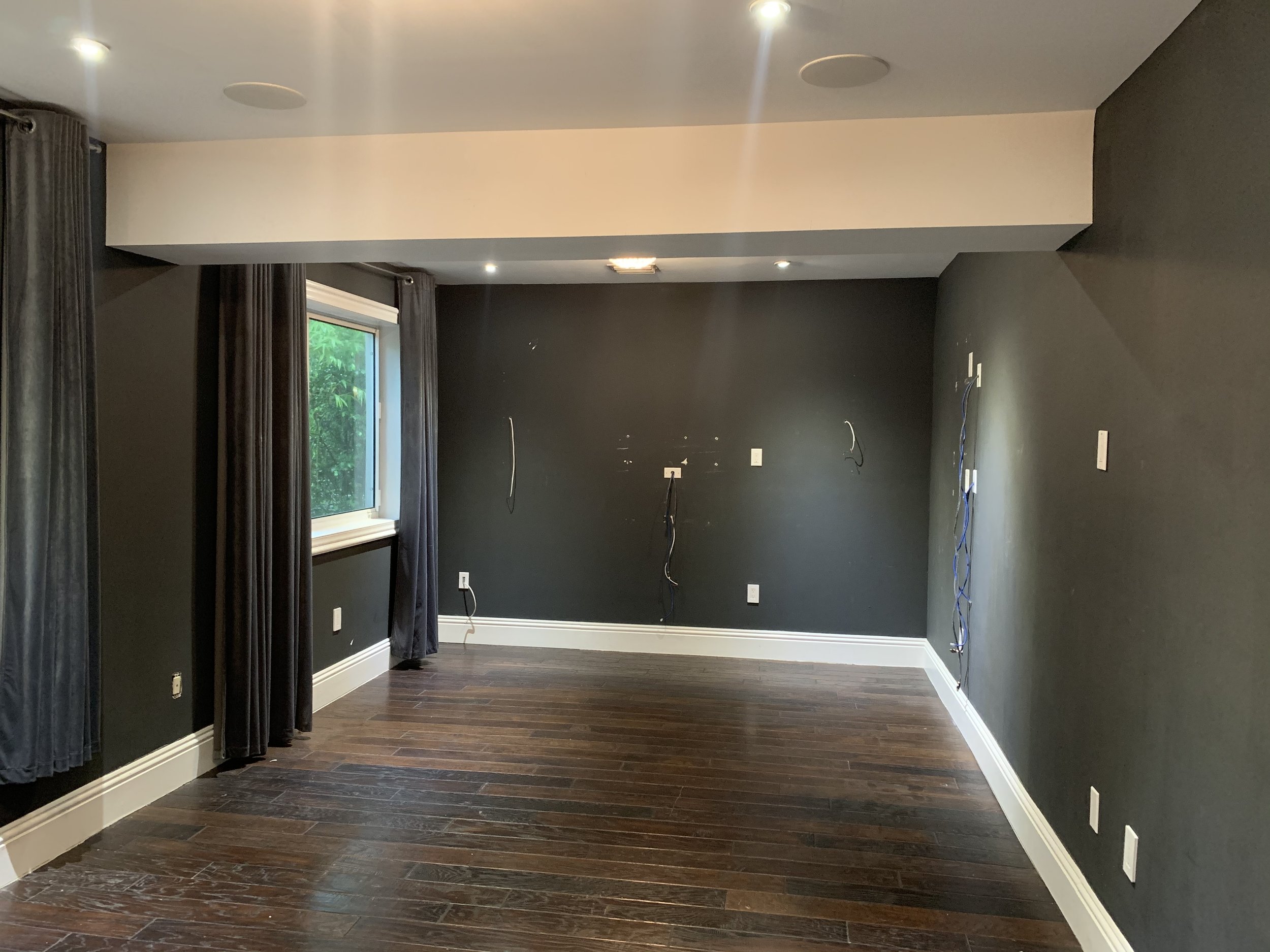
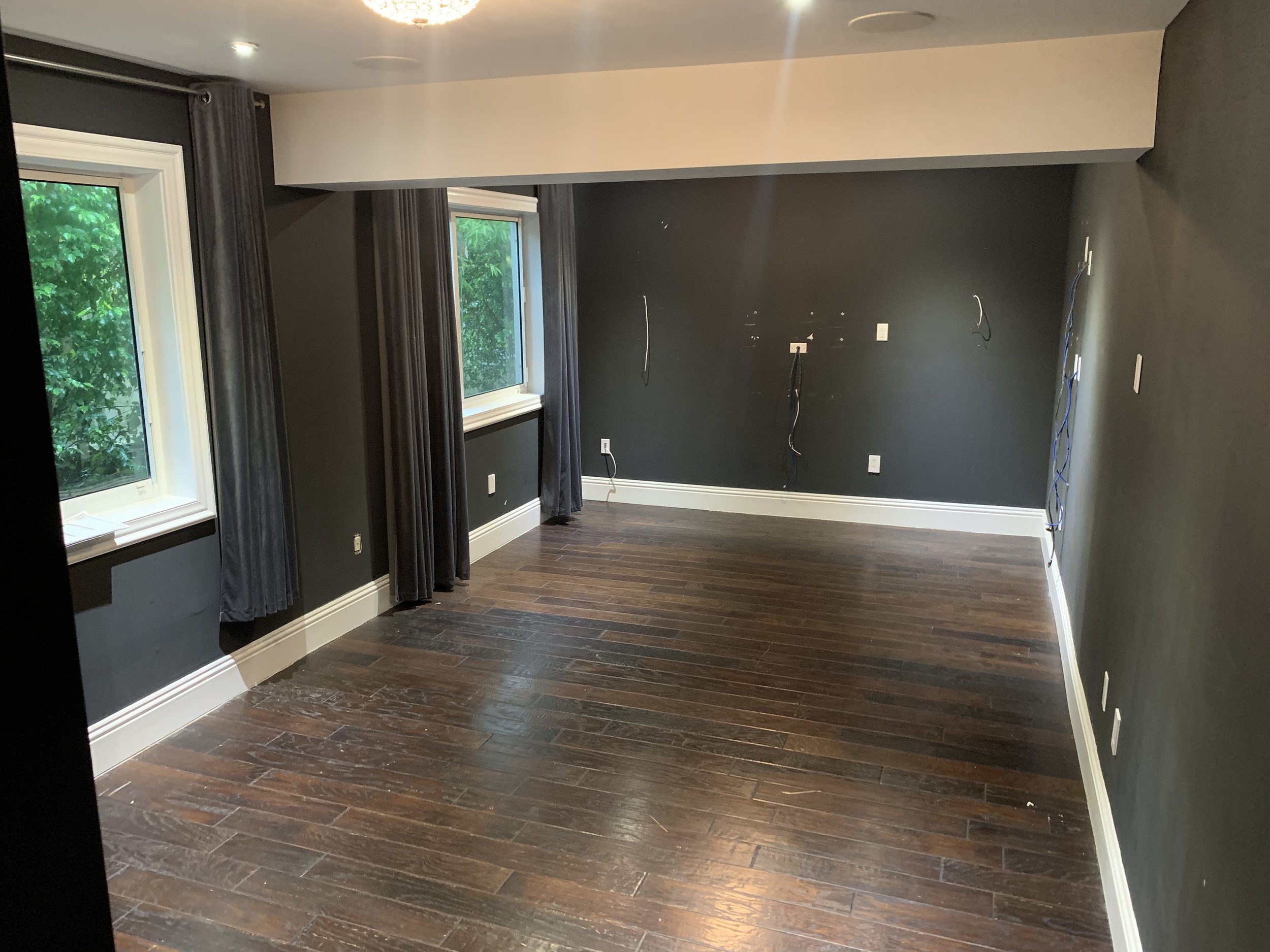
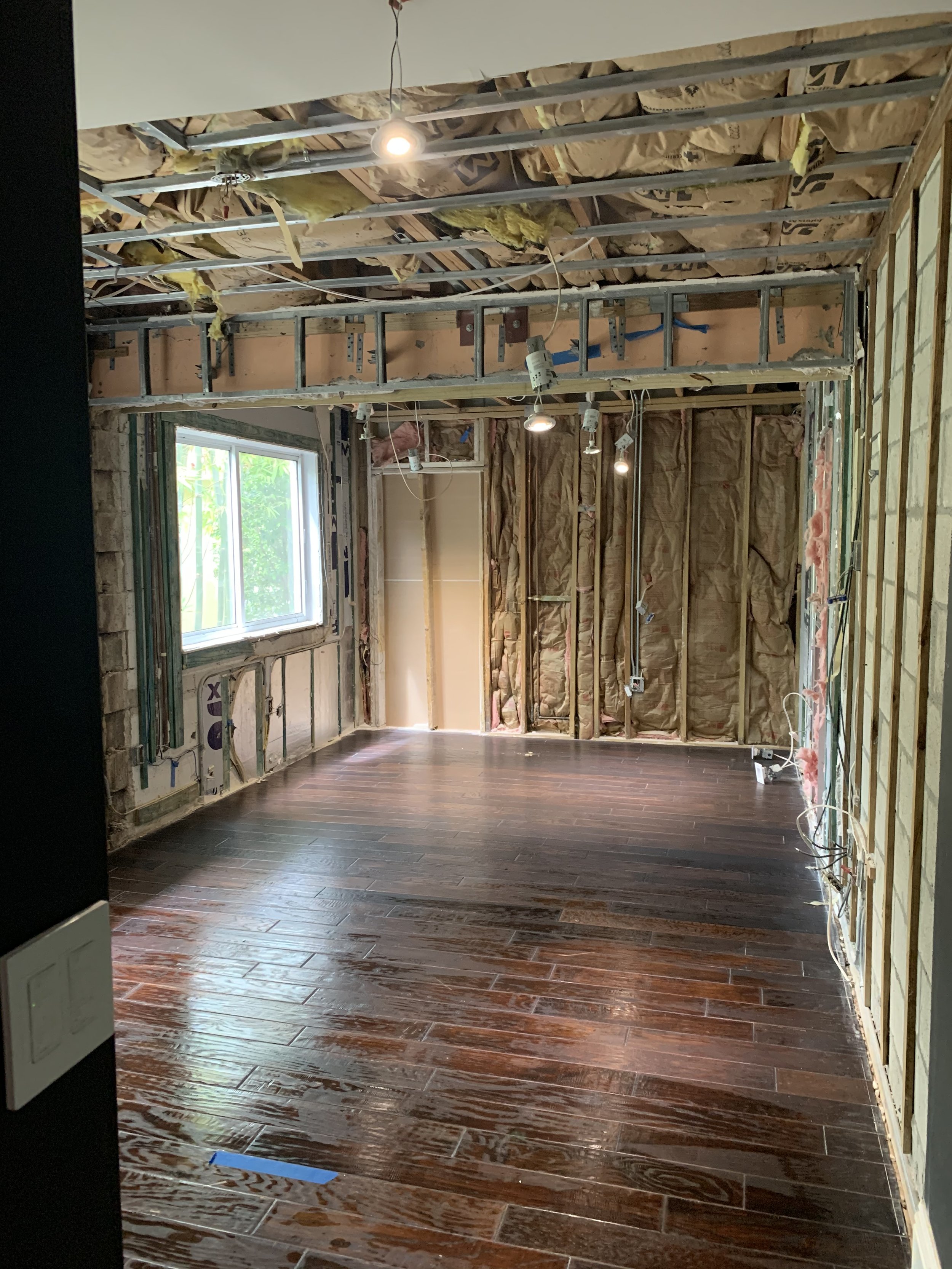
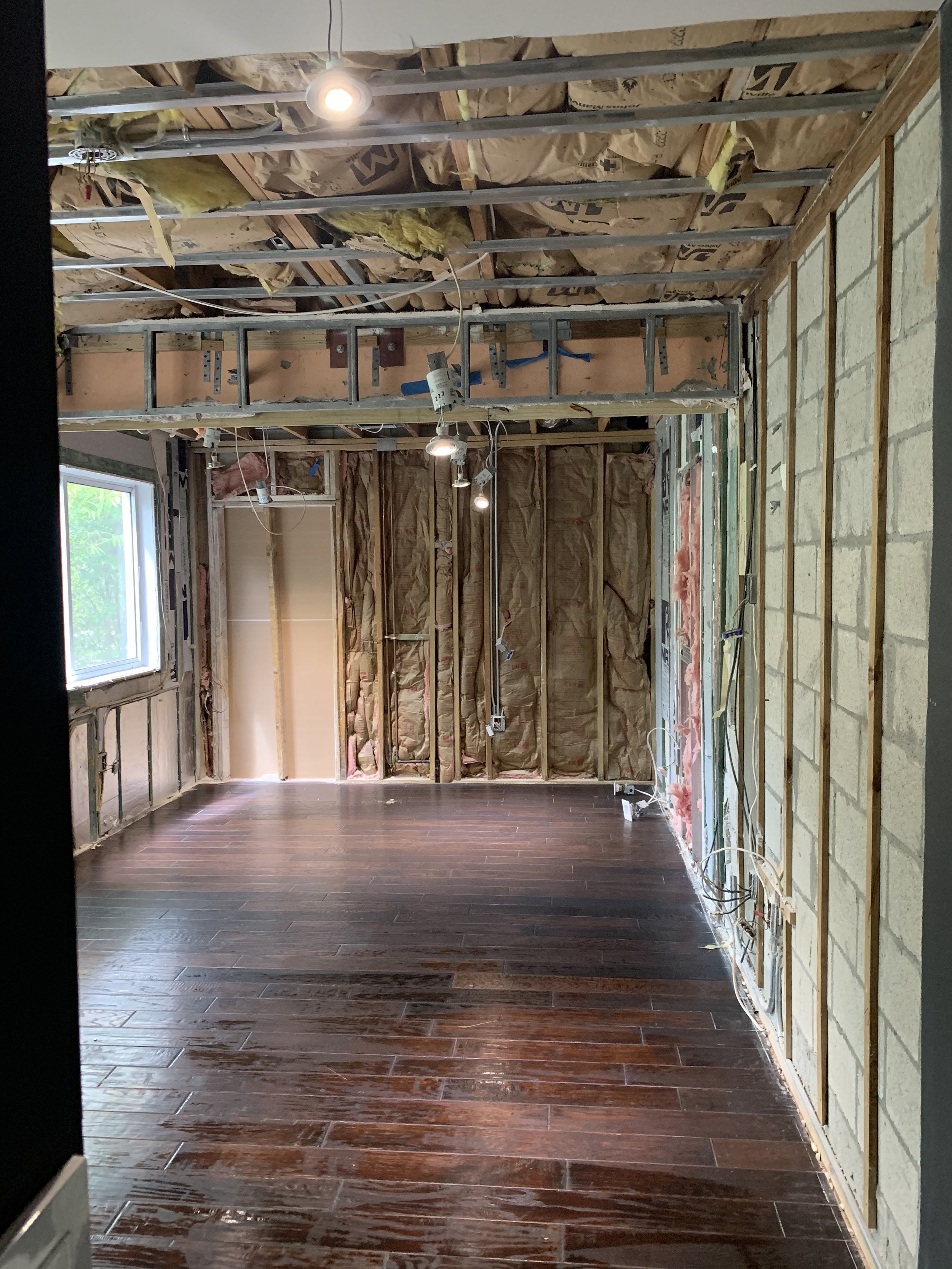
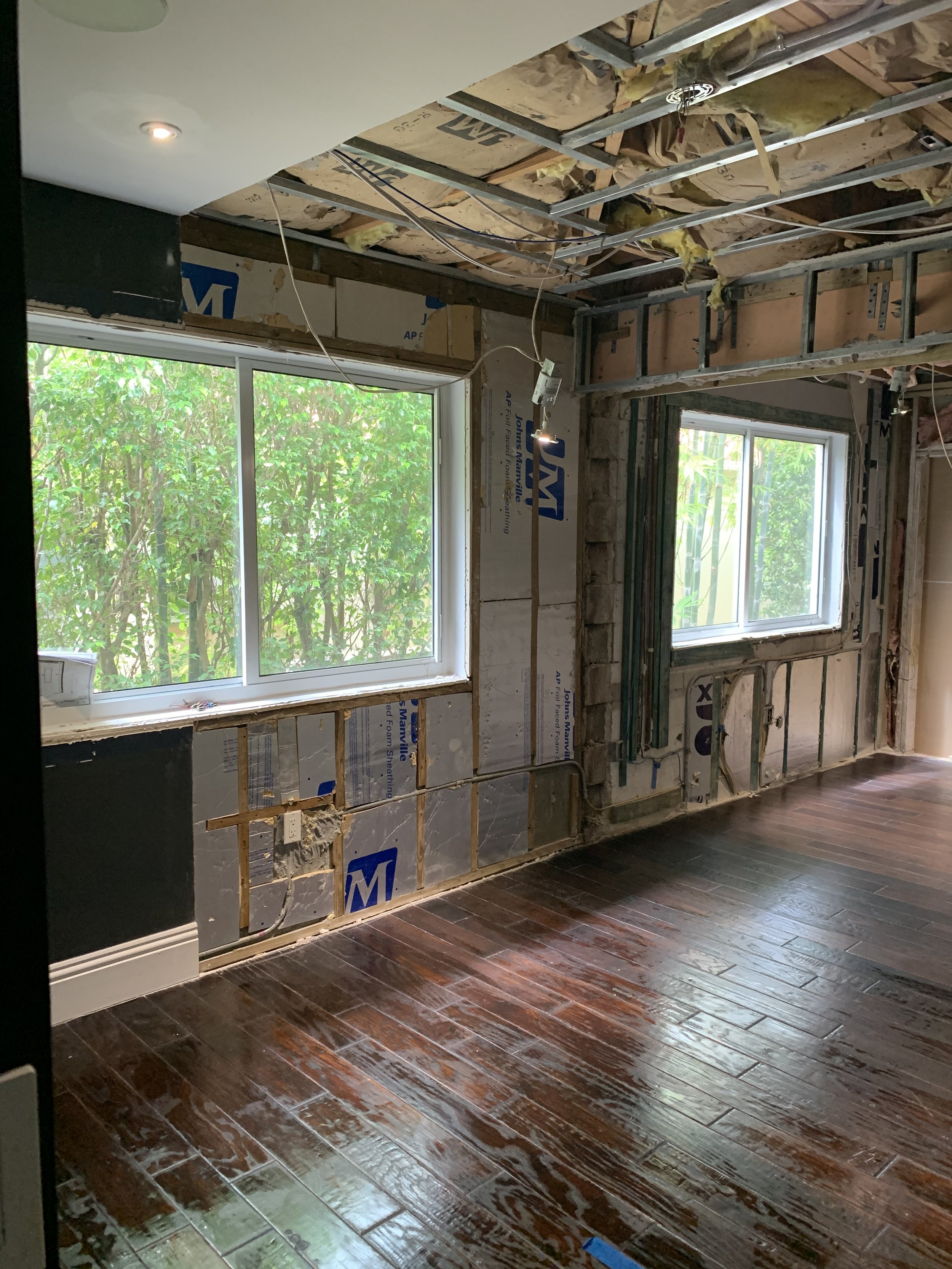
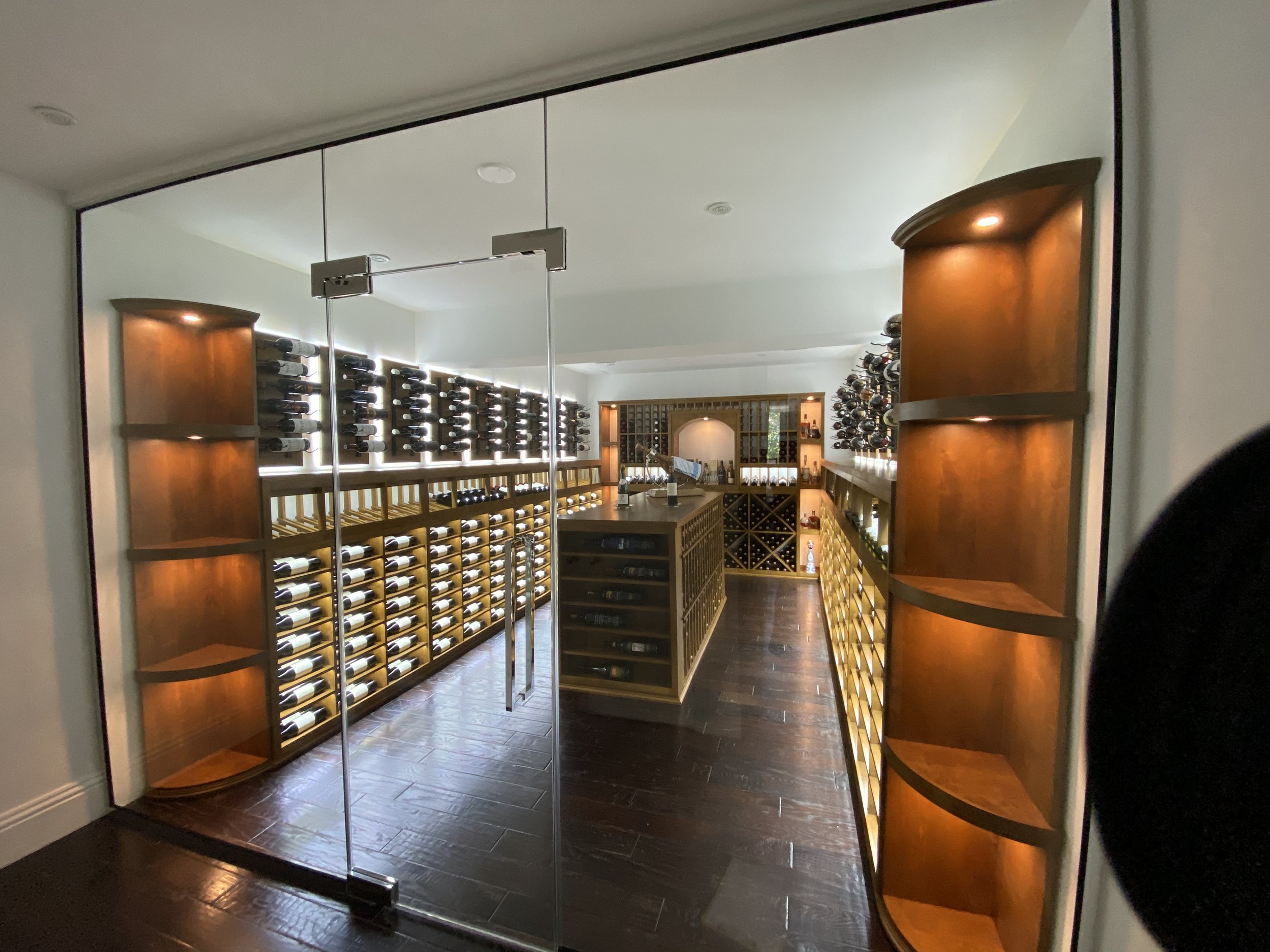
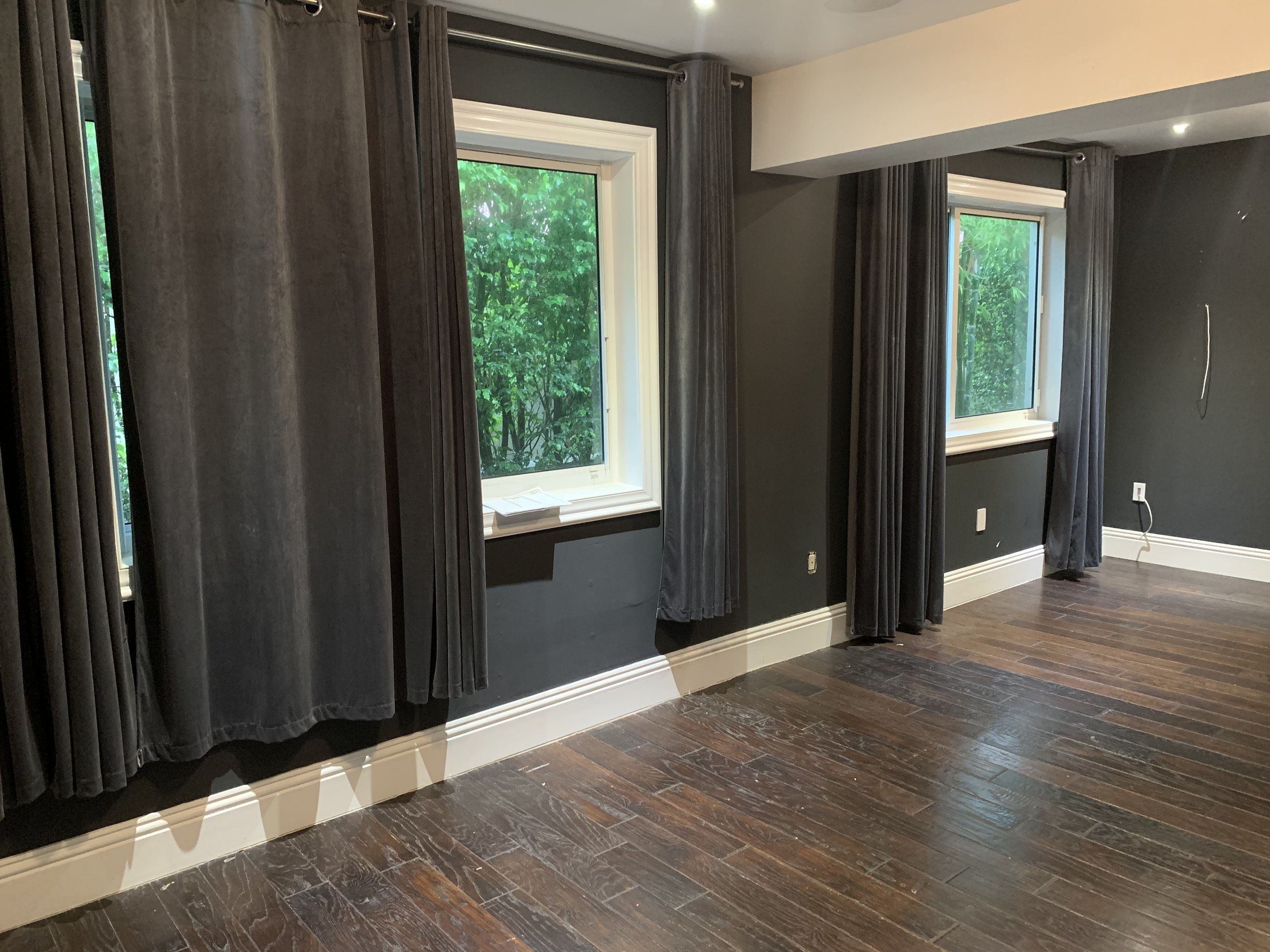
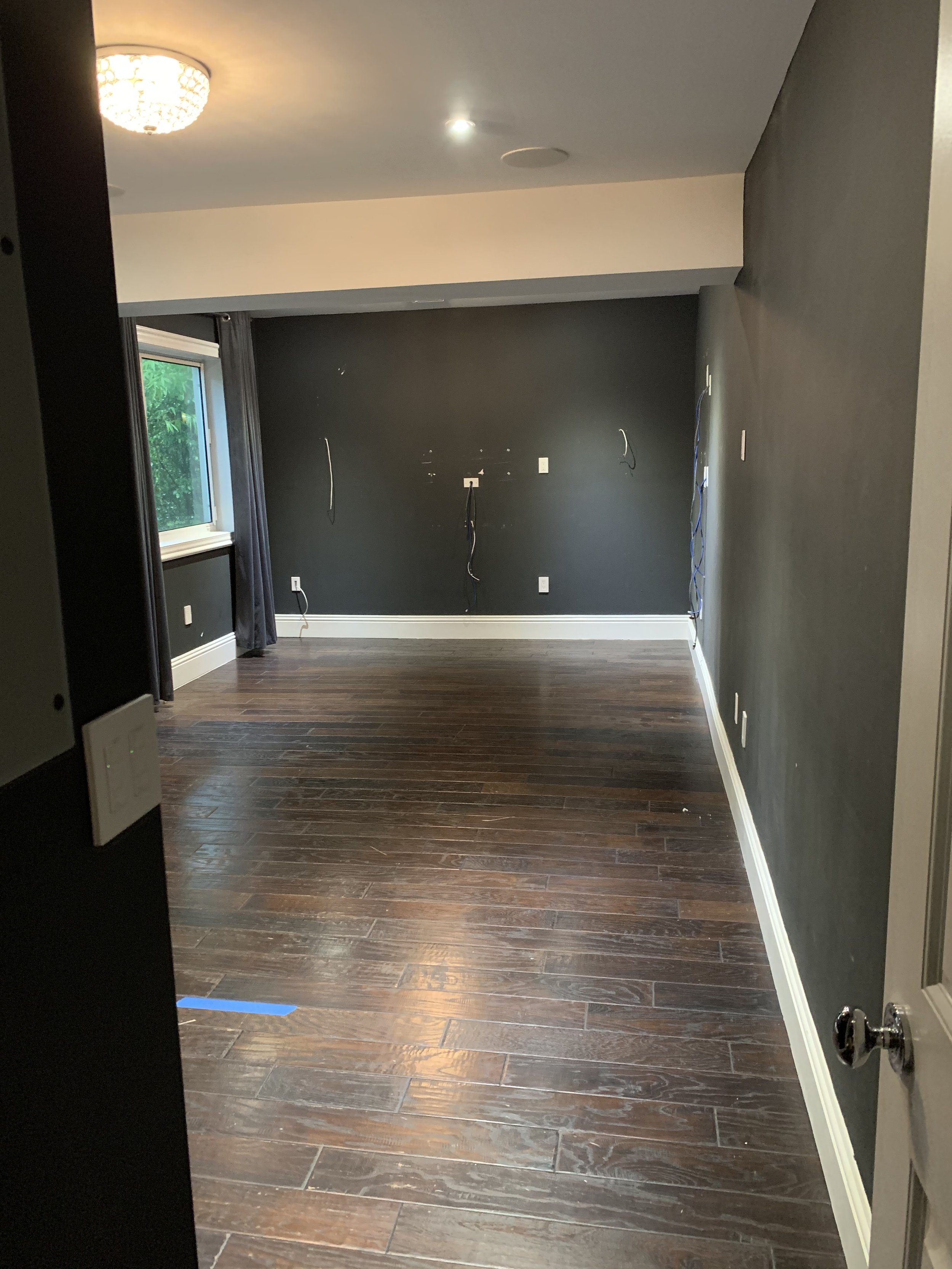
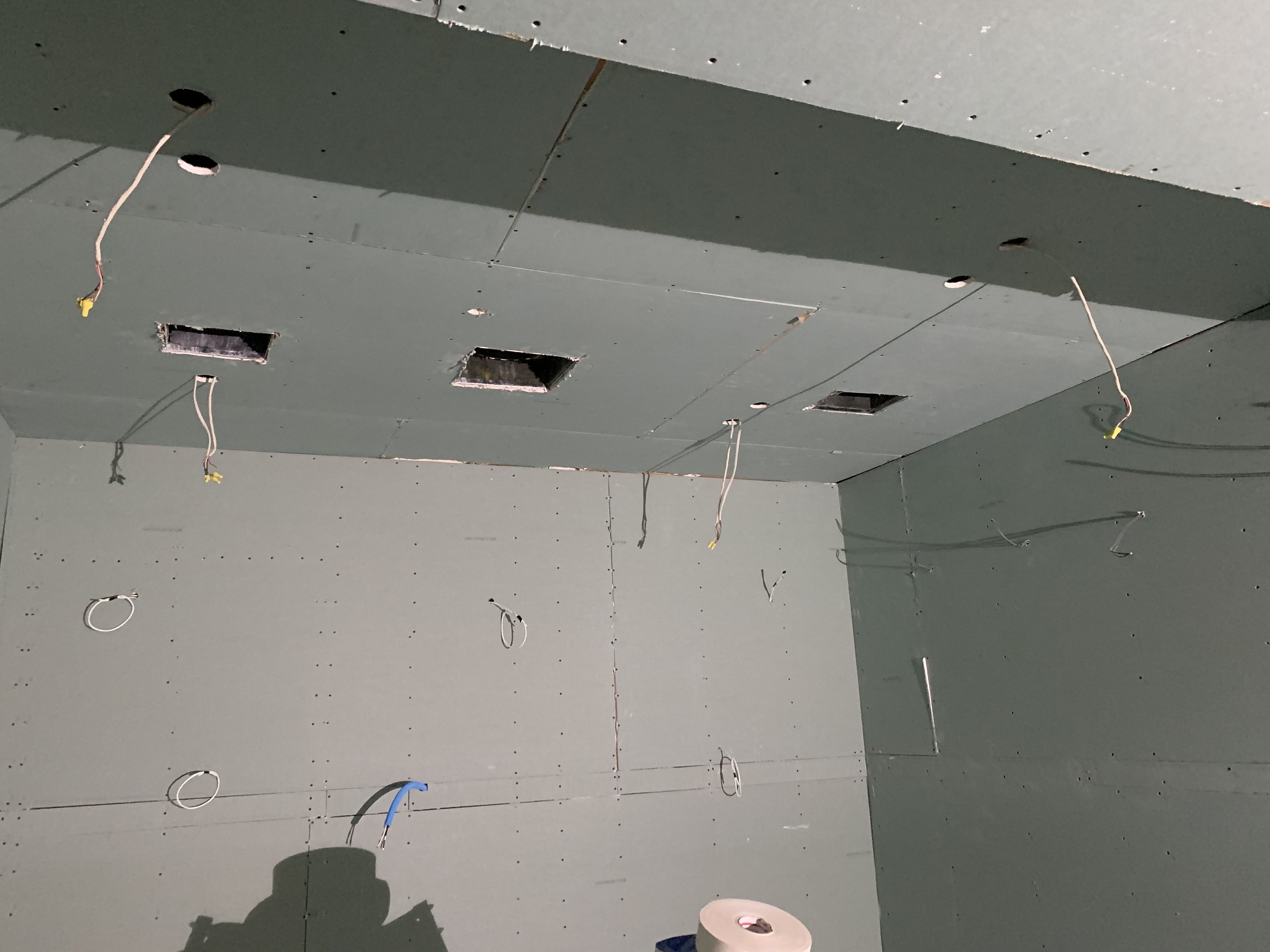
All of the elements that can add variance can be removed as needed. In this instance, we simply had to remove all the drywall to help with the temperature and humidity management.
What we then did was add closed cell insulation to take back temperature control into our hands as we see fit. Then we do some electrical renovation to help accommodate the LED lighting (which is much better than traditional lighting solutions or natural light). From there we installed a whisper kool Quantum split system to keep it at a constant, never shifting 55 degrees.
Add to that some additional insulation from the glass doors and make it nearly airtight to regulate the airflow and thus the humidity. Now you have yourselves a wine cellar that can basically be constructed from any spare space you have in your home, whether it's a spare bedroom or a den, or some other unused area. We convert it into a traditional and modern-looking space with forwarding racks that will help keep it at the right angle for proper storage.
In addition, the Vintage view labels and information will be easily visible so you will be able to easily find that wine bottle you want to use for the day. We also added some traditional wooden racks to provide that aesthetic look, while placing backlit wall panels so that they aren't glaring on your wine bottles but still allow you to view your collection easily.
Not only do you get a fantastic-looking wine cellar that fits the confines of your available space, but our construction will help maintain the longevity and usability of your wines as long as their actual shelf life is.
Plus since our systems also handle the humidity and keep it at around the 70% range, no need to start getting unappealing mold on some of your collection, keeping the aesthetics of the location at the top for yourself and when you have guests over.
Want to see what the finished product looks like?
We’ve included a gallery below with photos of this custom wine cellar in Coral Gables, Florida. You can see the level of craftsmanship and quality design that goes into each of our custom built wine cellars.
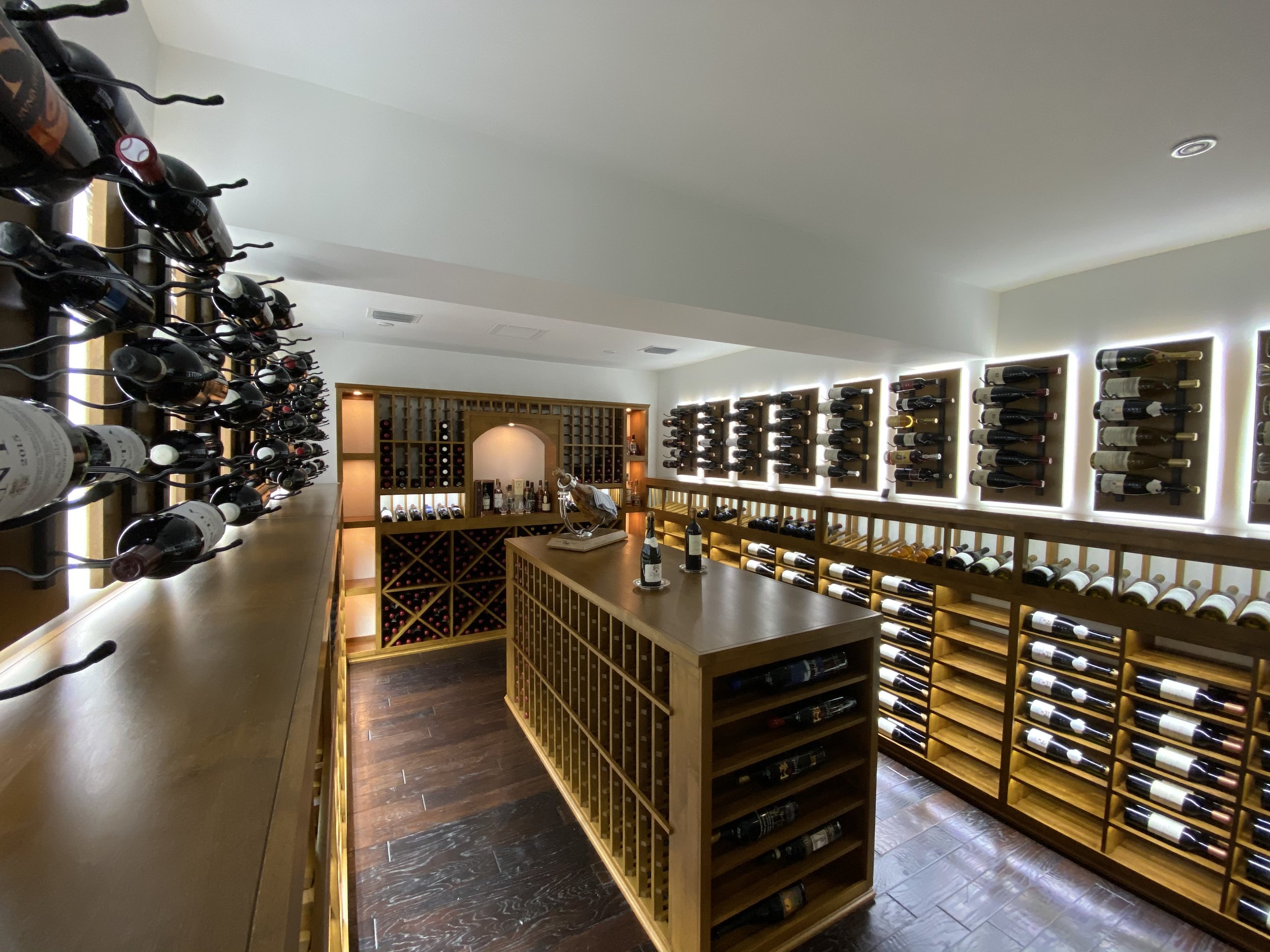

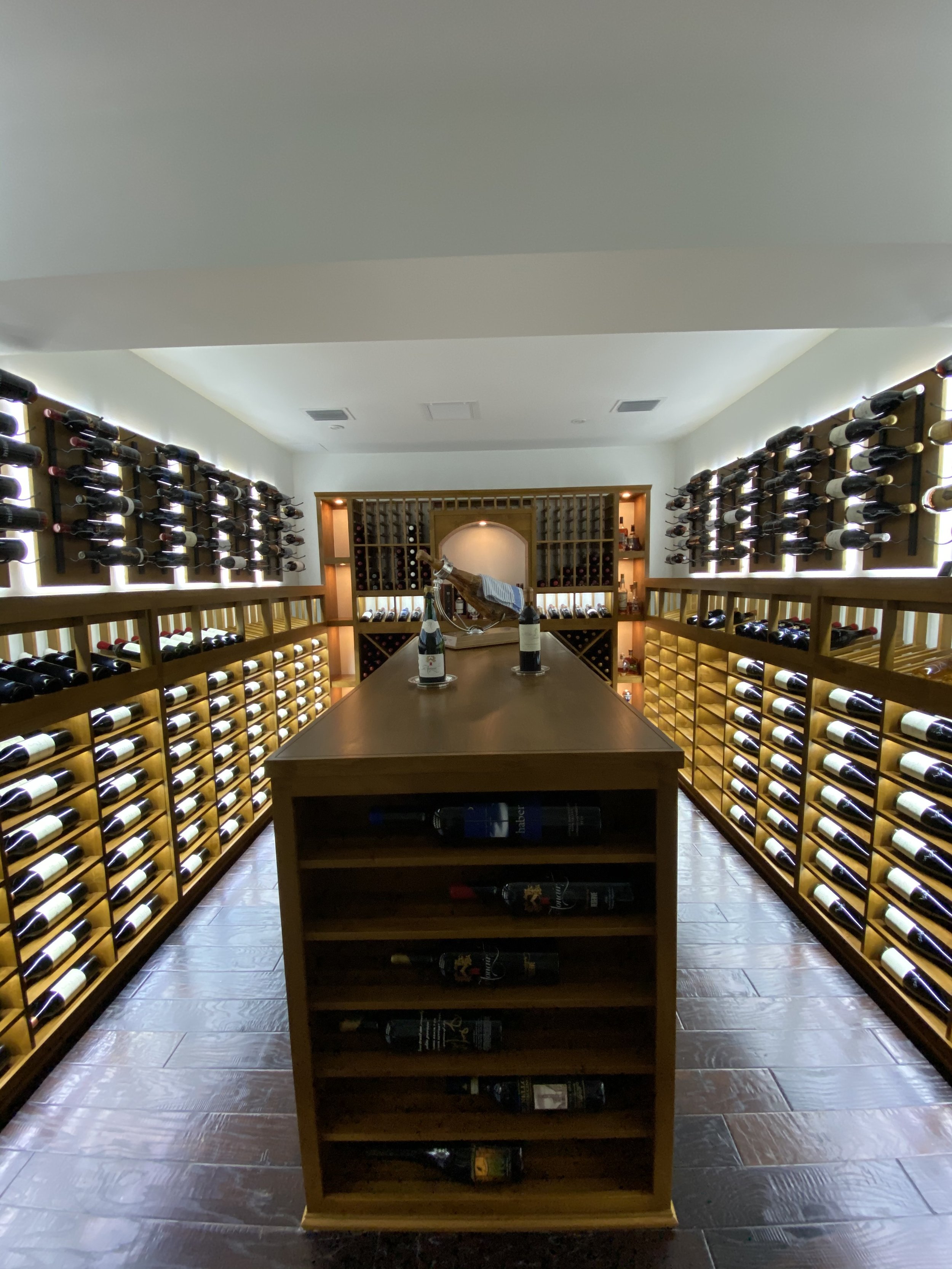
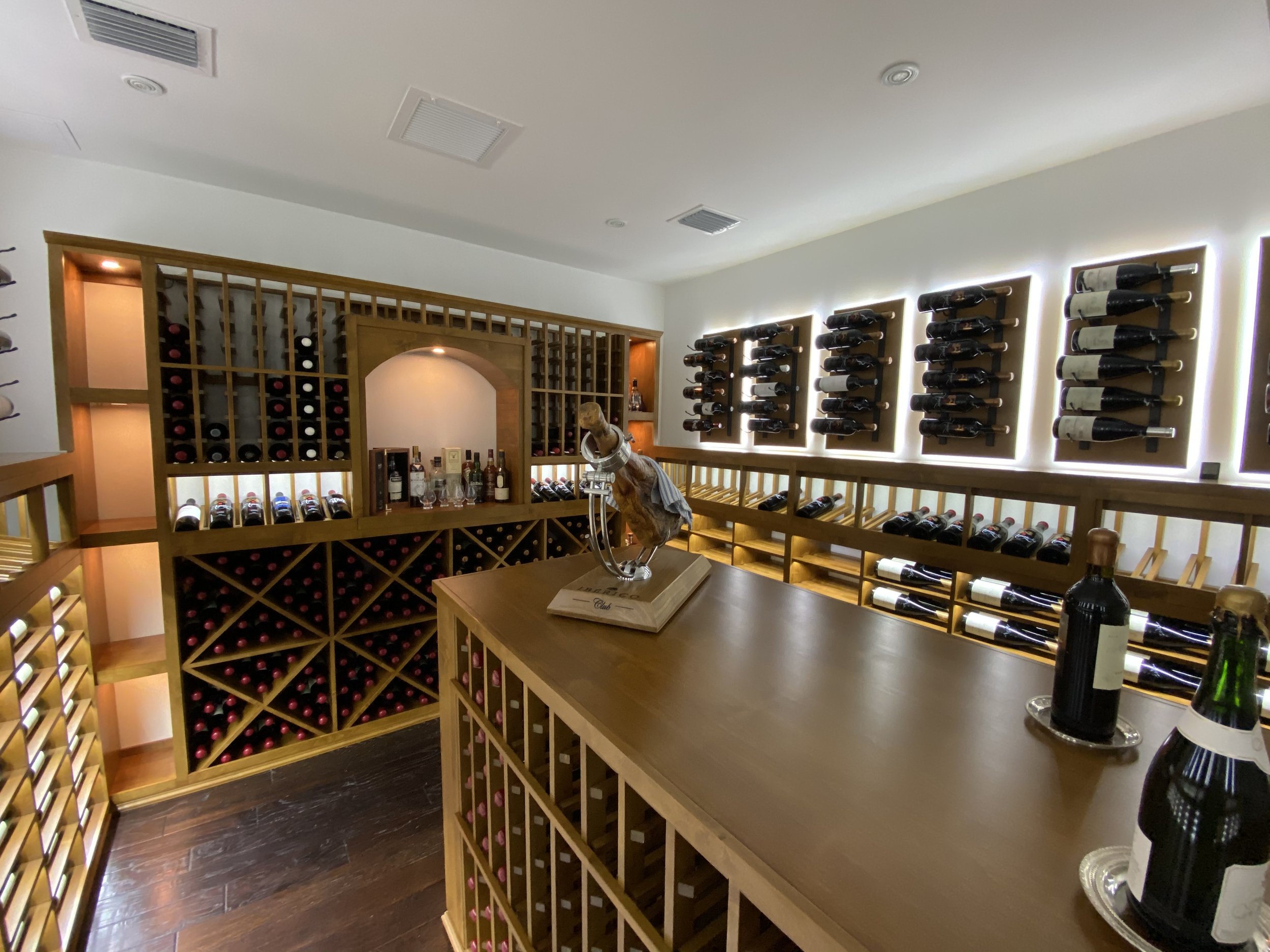
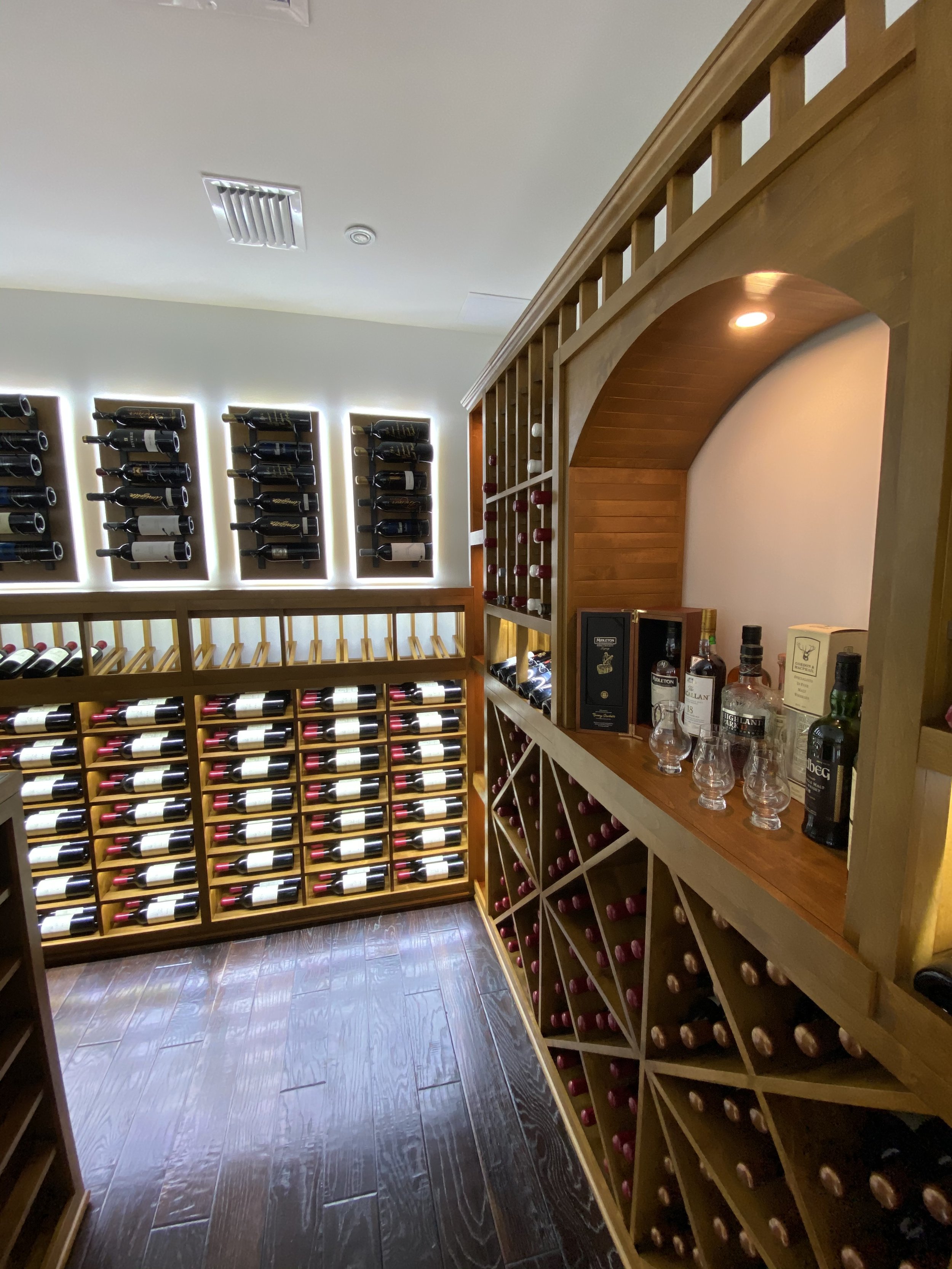
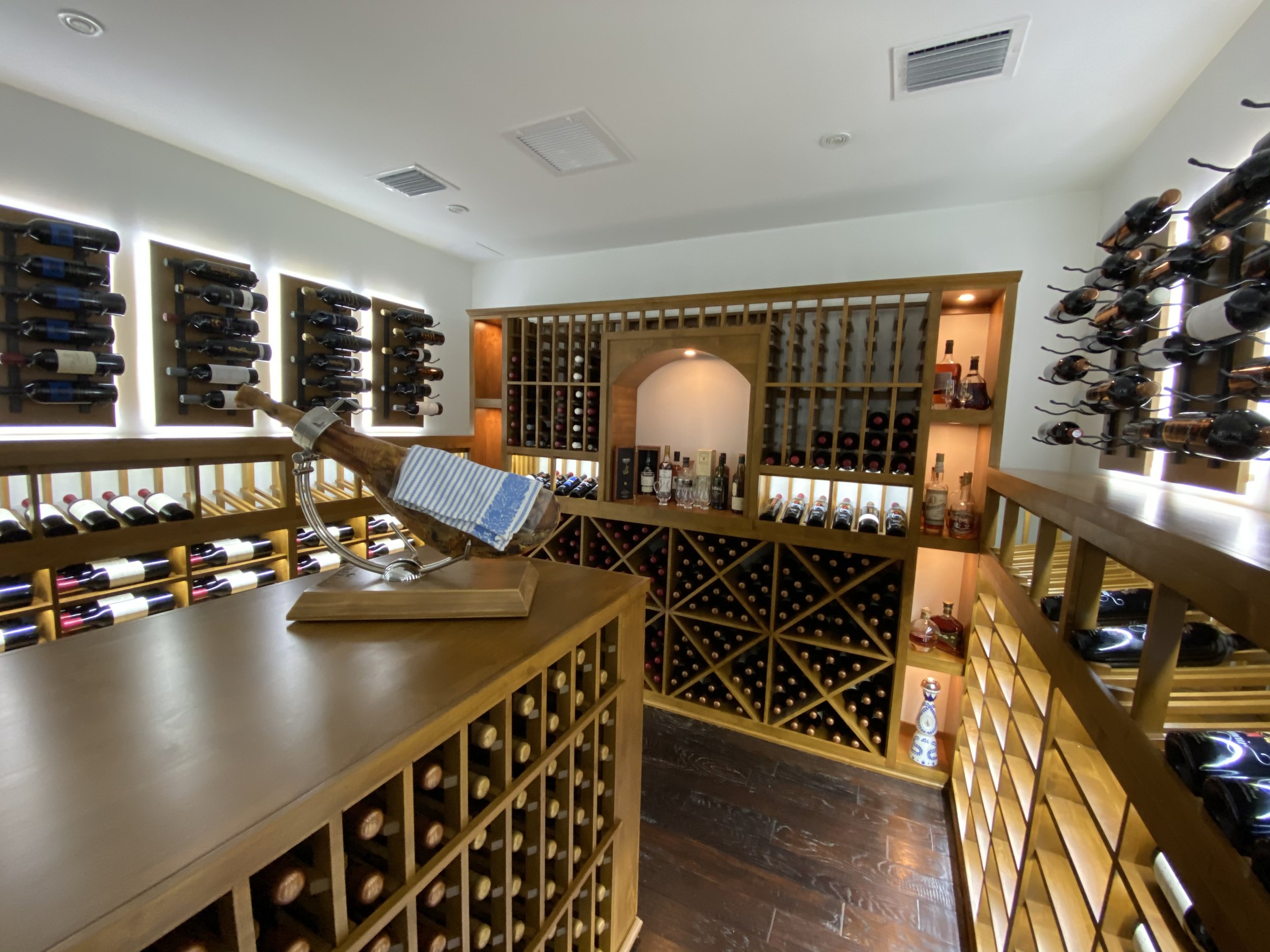
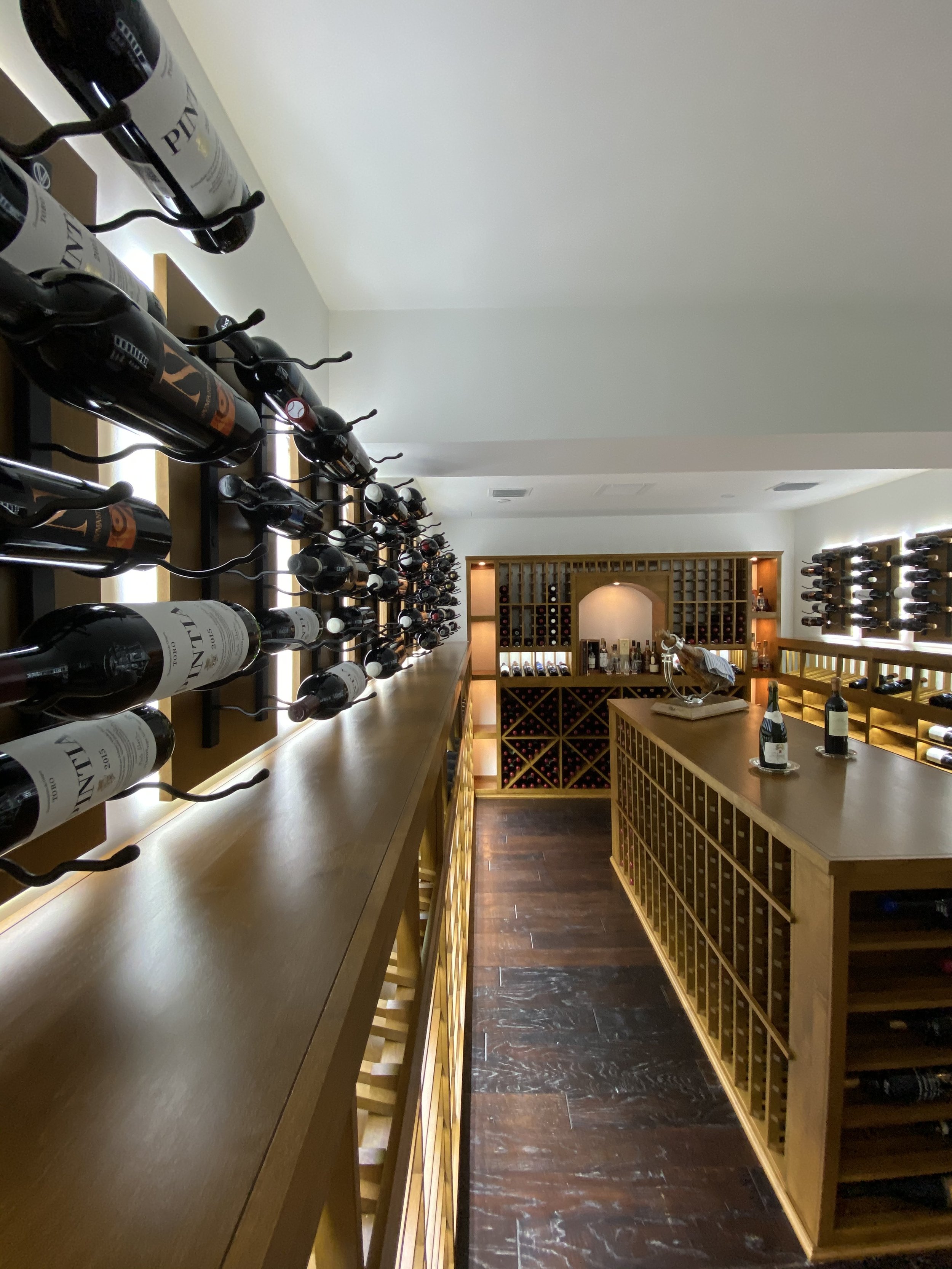
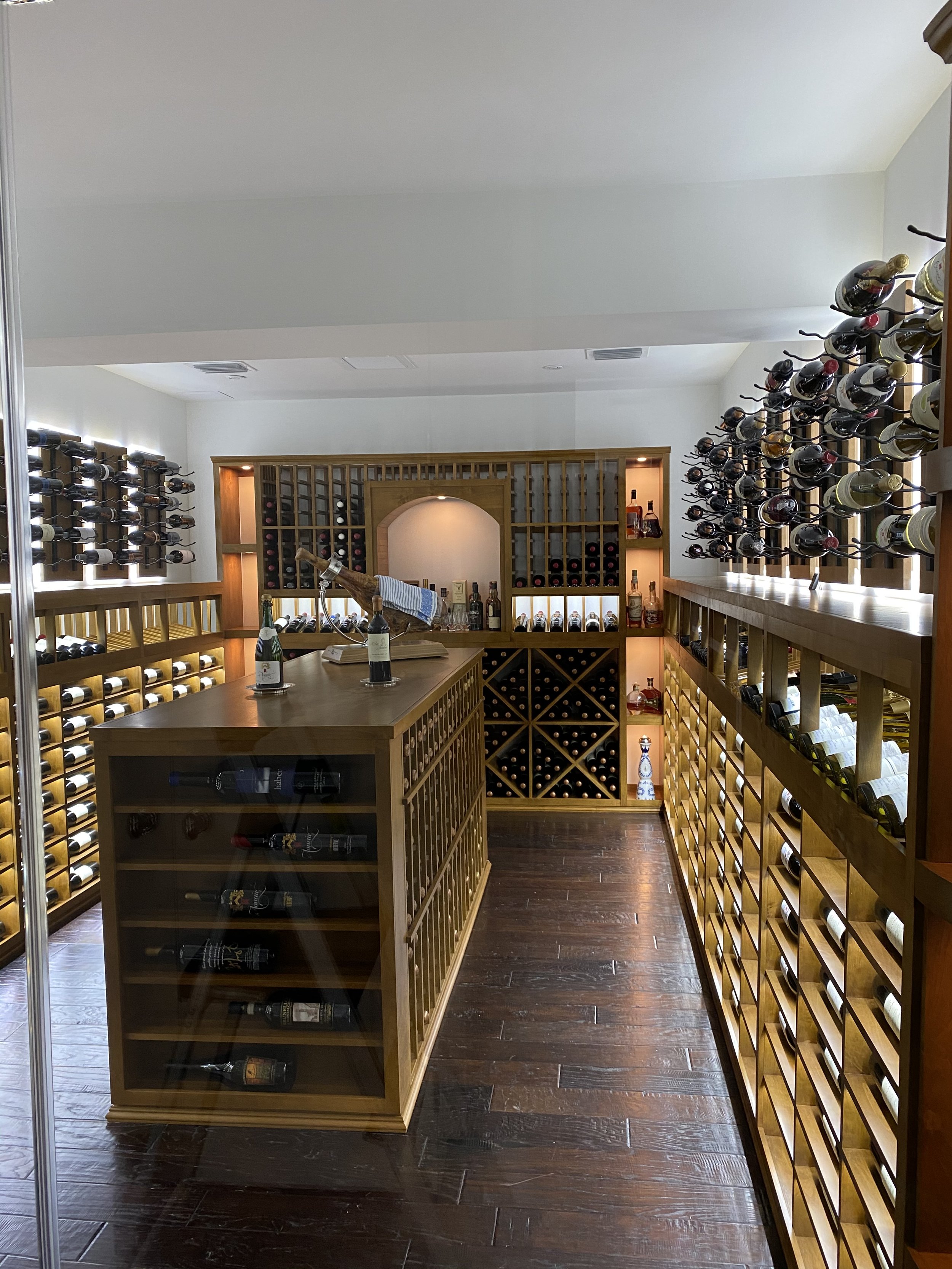

How long can wine last?
This is an excellent question, as many believe that wine can last indefinitely and gain better flavors and even value in some cases. That’s absolutely true for some types of wines, and there are even some brokers out there that can help have you purchase those wines as an investment.
Yet those need to come directly from vintners and brokers that are specifically in the business of wine investments. When that is not the case, most wines actually only last a few years. Even less when they aren’t being properly stored.
That means for those that are serious about their wine, and want to ensure that they are able to enjoy it during the lifetime of that wine, should always consider proper storage space for it.
It's also a fantastic way to add value to your home, as it is a unique setup, that allows for a controlled climate environment, which can help when it comes to selling your home.
-
September 2023
- Sep 12, 2023 Showcasing Excellence: Innovative Saunas Across the U.S. and Beyond Sep 12, 2023
- Sep 6, 2023 Seasonal Pairings: Wines to Enjoy and Sauna Routines to Follow Sep 6, 2023
-
June 2023
- Jun 27, 2023 The Rise of Biodynamic Wines: A New Era of Viticulture Jun 27, 2023
-
May 2023
- May 25, 2023 Saunas and Hot Yoga: A Detailed Exploration May 25, 2023
-
January 2023
- Jan 25, 2023 The Battle Against Mold: Keeping Your Wine Cellar Pristine and Your Vintages Exquisite Jan 25, 2023
-
December 2022
- Dec 20, 2022 Embracing Luxury at Home: Discover the Synergy of Custom Saunas and Wine Cellars Dec 20, 2022
- November 2022
-
October 2022
- Oct 20, 2022 Top 10 Essential Factors for Creating the Perfect Custom Wine Cellar in Your Home Oct 20, 2022
-
September 2022
- Sep 20, 2022 The Ultimate Guide to Choosing and Installing the Perfect Home Sauna Sep 20, 2022
-
August 2022
- Aug 15, 2022 Are saunas good for your skin? Aug 15, 2022
-
June 2022
- Jun 1, 2022 Innovative Wine Cellar Builder [Pompano Beach, Florida] Jun 1, 2022
-
April 2022
- Apr 18, 2022 7 Unexpected Health Benefits of Drinking Wine [Infographic] Apr 18, 2022
-
March 2022
- Mar 21, 2022 Creating A Stunning Contemporary Wine Display Mar 21, 2022
-
February 2022
- Feb 9, 2022 Wine Cellar Checklist: How To Create The Perfect Wine Cellar For Your Home [Infographic] Feb 9, 2022
-
January 2022
- Jan 24, 2022 Full Spectrum Infrared Sauna: What is it all about? Jan 24, 2022
- Jan 13, 2022 Sauna Safety Guidelines [Infographic] Jan 13, 2022
-
December 2021
- Dec 30, 2021 Innovative Saunas And Cellars Featured Wine Cellar [Coral Gables] (Residence) Dec 30, 2021
- Dec 9, 2021 Innovative Saunas And Cellars’ Featured Modern Wine Cellar [Boca Raton, Florida] Dec 9, 2021
-
October 2021
- Oct 11, 2021 How To Properly Clean and Maintain Your Wine Cellar [Infographic] Oct 11, 2021
-
September 2021
- Sep 16, 2021 Chocolate And Wine Pairing Guide [Infographic] Sep 16, 2021
- Sep 6, 2021 Building A Sauna [DIY Guide] Sep 6, 2021
-
August 2021
- Aug 9, 2021 How to Properly Clean and Maintain a Sauna [Introduction] Aug 9, 2021
- Aug 2, 2021 A Guide To Wine And Cheese Pairings [Infographic] Aug 2, 2021
-
July 2021
- Jul 26, 2021 Ultimate Guide To Mold In Wine Cellars Jul 26, 2021
- Jul 20, 2021 Tips For Therapeutic Sauna Use [Infographic] Jul 20, 2021
- Jul 12, 2021 Why Red Wine? The Main Health Benefits of Red Wine Jul 12, 2021
- Jul 5, 2021 How Wine Is Made [Infographic] Jul 5, 2021
-
June 2021
- Jun 24, 2021 The Ultimate Beginner’s Guide to Saunas Jun 24, 2021
- Jun 17, 2021 Our Mission As Sauna Builders & Wine Cellar Builders Jun 17, 2021
- Jun 10, 2021 The Beginner’s Guide to Wine Tasting Jun 10, 2021
- Jun 3, 2021 The Ultimate Guide To Wine Decanting Jun 3, 2021
-
May 2021
- May 21, 2021 Innovative Sauna Builder [Austin, Texas] May 21, 2021
- May 14, 2021 Sauna Kits by Helo | Traditional or Infrared - Innovative Saunas and Cellars, Inc May 14, 2021
-
April 2021
- Apr 29, 2021 What Makes A Good Wine Cellar? Apr 29, 2021
- Apr 23, 2021 Why Are Custom Wine Cellars And Wines Great Investments? Apr 23, 2021
- Apr 19, 2021 Investing In A Custom Home Sauna: Is It Worth it? Apr 19, 2021
- Apr 5, 2021 The Health Benefits of a Sauna Can Be Life Changing Apr 5, 2021

